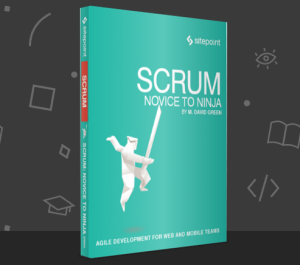
When it comes to digital marketing, few things receive as much attention as traffic generation does. In fact every time Google takes so much as a hiccup, it sends the entire online marketing community into a tizzy!
While traffic is no doubt the lifeblood of the internet, it stands to reason that what you do once you have it is just as important, if not more so. Lately, conversion rate optimization (CRO) has been garnering a lot of attention, and for good reason — any webmaster will want to convert as much of their traffic into subscribers, followers or clients.
Now, most people will contend that CRO is pretty much concerned with onsite activities. This will include optimizing landing page elements such as titles, pictures and CTAs. However, what many forget is that the buyer’s journey is a long process — one that began before they even came to the site. How you interact with your visitors offsite will have a large say in how they respond to you on it. This is where lead nurturing steps in.
Lead nurturing is the process of developing a relationship with your audience through every step of their interaction with you. It goes without saying that lead nurturing strategies are indispensable for CRO. Consider these stats…
- Annuitas Group reported that nurtured leads made 47% larger purchases than non-nurtured leads.
- Gleanster found that lead nurturing helped convert 15%-20% of the “not yet ready to purchase” opportunities into sales.
- Similarly, Eloquoa stated that lead nurturing helped them improve conversion rates at every stage of the funnel.
In other words, lead nurturing can do wonders for your conversion efforts! Here are four strategies that can take your CRO to the next level.
Personalize the Content
Probably the biggest mistake companies commit when setting up a lead nurturing strategy is creating one set of blanket content which they then send to all the subscribers.
A better strategy is to classify leads under specific buyer personas (semi-fictional representations of customers) and then create content most valuable to each persona. A buyer persona can target a set of key attributes such as likes/dislikes, or problems that buyers are facing.
By segmenting leads based on common attributes, we can gain a better understanding of what subscribers are looking for and create more targeted content for them.
Personalized content is a proven winner too. A Forrester Research study found that 67% of the senior marketing executives surveyed in the US and Europe considered personalization to be important to their marketing studies.
Think Outside of the (In)box
Say lead nurturing and the first thing that comes into people’s mind is drip email marketing. However, a holistic strategy will consider all the platforms it can reach people on; this is important as email open and click-through rates are very low. The average open rate according to MailChimp usually hovers around 20%, while click-through rates are under 3%.
Ask your subscribers to follow you on social media and post interesting, targeted content there. Set up paid retargeting campaigns and use dynamic website content to help your visitors get the most helpful, relevant information possible.
Follow-up ASAP and Frequently
The problem with following up later rather than sooner is that your reply begins to resemble a cold call/mail as you get further away from the time a person subscribed to your list. A subscriber may forget why they were interested in your product or service, or they may have found a competitor in the meantime. InsideSales reports that if you follow up with a lead within 5 minutes of subscription, you’re 9 times more likely to convert them.
Likewise, frequent and timely follow-ups are important to ensuring subscribers remain engaged. In fact, “nurturing” is all about follow-up! There is no magic number to how many times you should contact a lead, however Lead Simple recommends 7 well-spaced follow-ups. Their research found that by the third contact, 80% of salespeople have already given up, and by the seventh contact, you are all that remains in the race.
Try Out Lead Scoring
Lead scoring helps you rank your subscribers on a scale of interest. As each person’s interest will vary greatly, lead scoring can help your marketing efforts by telling you which leads require attention now, and which can wait.
Brainstorm what qualities and attributes you want a qualified lead to possess. Each characteristic can be assigned a point which is given to a lead when they match it.
For instance, do your leads belong to a typical demographic? Do the majority of your buyers fall into a particular age group? What kind of information are they looking for? How frequently are they interacting with your content? These and other similar questions can help you understand just how interested a lead is.
This article by Hubspot goes into great length on how to setup lead scoring.
Conclusion
The saying goes: there’s no such thing as a bad lead. While the merit of this statement may be debatable, in terms of lead nurturing, it has a point. The emphasis here is to understand that most subscribers are simply not ready to purchase immediately. If leads are sitting on the fence, it’s the company’s responsibility to alleviate their concerns and built a rapport with them.
The processes described here are no doubt tedious, which is why companies can invest in marketing automation technologies. Their effectiveness has already been proven and such tools can greatly increase the efficiency of marketing and sales teams. Hubspot, Marketo and Salesforce are some popular choices that are worth looking into.
While making tweaks to your website and content are very much pivotal to CRO, understanding your prospects and helping them will play a far more major role in creating a lasting relationship.
 Parth Misra
Parth MisraParth is a freelance writer and certified content marketing specialist. He loves writing on technology, renewable energy, fitness and marketing. A value driven marketing evangelist, he has a knack for finding unique and unconventional ways to connect brands with their audiences using entertaining, informative content. Find out more about him at his website - Quill Canvas.



